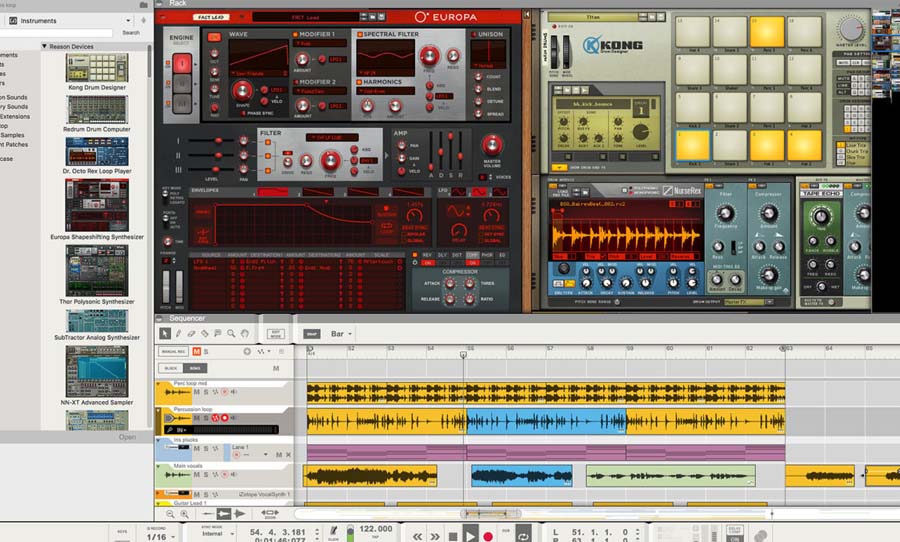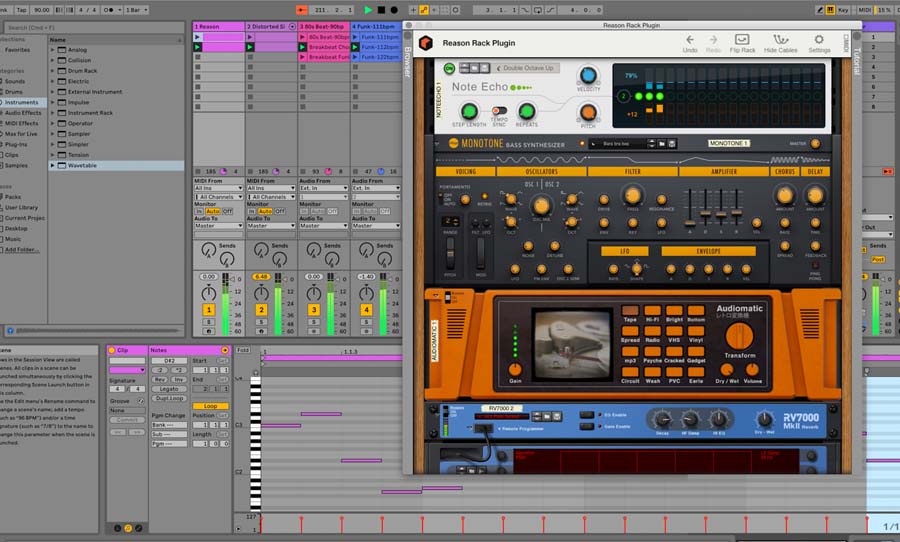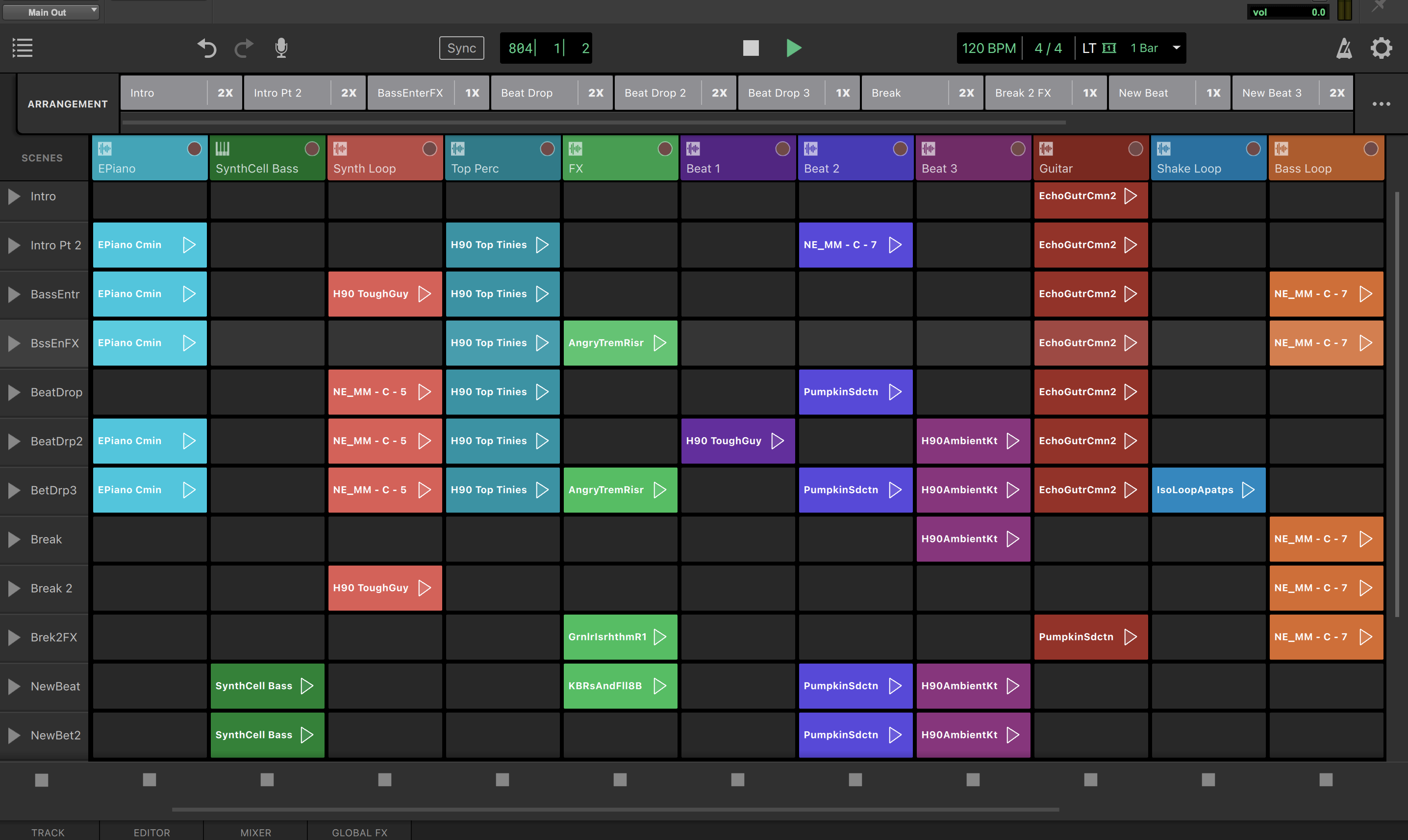While most people might not remember their first encounter with a DAW, first impressions count. At the dawn of the new millennium, Reason, from Swedish developer Propellerhead, made quite a splash with its new take on the digital audio workstation.
Whereas systems like Logic Pro and Pro Tools sought to replicate, then augment the functions of the traditional recording studio, Reason approached digital music production from an altogether more musical perspective.
Yet it didn’t completely disregard the workflow of old-school outboard equipment. In fact, the physical connections that made up the traditional studio were front-and-centre in Reason. The user was greeted with a wall of virtual synths and effects processors, that could be connected by patch cables, just like the good old days.
At the turn of the century, Propellerhead saw a gap in the maturing DAW market. They launched Reason, a software that proudly brought a modular workflow in the box.
The lead-up
In the ’90s, microprocessors were getting cheaper and more powerful. Therefore, the DAW was increasingly within reach of the home audio enthusiast. Propellerhead, the brains behind Reason, kicked off their own journey at this auspicious time (1994 to be exact).
They first launched ReCycle: a software for speeding up and slowing down samples and loops without affecting pitch. For this release, they collaborated with Steinberg and it was initially marketed as a companion for Cubase. In 1997, they released ReBirth RB-338: a step-sequencer virtual instrument which took inspiration from the classic Roland machines from the golden age of acid and techno: the TB-303, TR-808 and TR-909.
In the following year, the company had a breakthrough, the repercussions of which are still being felt today. ReWire was also launched in conjunction with Steinberg, allowing Cubase users to bring ReBirth into their sessions. It’s a software protocol which allows communication between ‘Hosts’ (basically DAWs and sequencers) and ‘Devices’ (virtual instruments from third parties or other DAWS).
In 1999, ReWire was opened up for general use, licence free. This meant that if you have a favourite drum machine in FL Studio, for example, but your project is in Logic Pro, you can use ReWire to bring the grooves over to your host project. Enthusiasts have been getting platforms to talk to each other this way ever since.
The age of Reason
Despite their early success in working alongside other platforms, Propellerhead decided to strike out on their own. Reason 1.0 was born in 2000. By this stage, Pro Tools, Logic and Cubase were compelling options for digital productions and Reason didn’t try to emulate these established programs. Instead, they presented users with an interface that was simultaneously behind and ahead of the times.
In one way, it was retro, presenting a view of racks of outboard gear that could be patched together with virtual cables. In another way, it was ahead of the curve, preempting the Eurorack craze and the birth of renewed interest in modular synthesis.
Another brave choice was the lack of support for third-party plugins and virtual instruments. If you dove into the Reason ecosystem, you better like it, because you’d be waiting on Propellerhead to develop new tools to expand your palette. Fortunately, this played to the strengths of Reason – with every update came more cutting edge virtual synths, drum machines and effects to indulge in.
Nowadays, Reason is packed with over 70 instruments and effects including the flagship Europa wavetable synth, the classic Subtractor polysynth, the MPC-style Kong drum designer and many more in each of these categories. There’s also a swathe of curated sample packs that approach acoustic instruments in new and exciting ways (see Processed Pianos and Radical Keys for example).
The effects encompass the classics, like the DDL-1 Digital Delay Line, Channel Dynamics, PEQ-2 Two Band Parametric EQ, as well as the more stylised, like the Audiomatic Retro Transformer, Pulveriser Demolition Unit and the Synchronous Effect Modulator among others.
Throughout its lifespan, from its first release to the current one, version 11, Reason has sought to do things its own way. Make no mistake, the Rack is still at the centre of the Reason MO. But Reason has caught up to its competitors in almost every respect. In keeping with the ReWire philosophy, however, Reason still plays nice with other DAWs: you can use a Reason Rack as a VST within other systems.
Recording audio, which was a pipe dream on Reason’s first release, is now comprehensive. There’s a mixer that’s based on the SSL 9000K analog console, even sophisticated audio editing is now simple in this DAW. You can even use your favourite plugins as VSTs in Reason. As if doubling-down on their fully-fledged DAW credentials, Propellerhead has even changed its name to Reason Studios.
While some may lament the fact that Reason has the functionality of other DAWs, most of their contemporaries have also seen the commercial sense in closing the loop around the entirety of the music production process. But with the cornerstones of the famous Rack and REX loops format – allowing users to mould audio samples without altering pitch – Reason has more than enough individuality in its character to ensure its relevance, long into the future.


